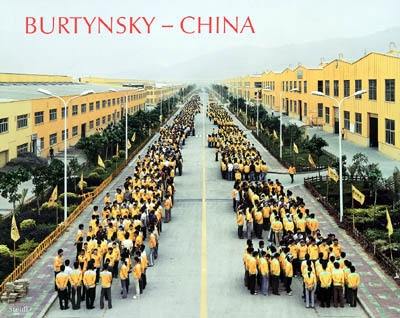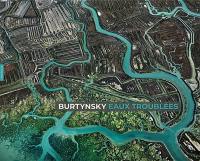
Fiche technique
Format : Relié sous jaquette
Nb de pages : 147 pages
Poids : 2208 g
Dimensions : 37cm X 30cm
EAN : 9783865212528
China
the photographs of Edward Burtynsky
Quatrième de couverture
"Unless, like me, you already admired industrial sites for reasons of personal history, Burtynsky's images can be therapeutic by introducing aesthetic doubt into your culturally determined sensibility."
Marc Mayer
"As urban as China's modern cities look, they are vast collections of country folk who have left home in the past few years. These new urbanites exist in the middle of a single generation that will send 300 million people to China's cities and are creating the urban industrial future that is changing the tilt of the world."
Ted Fishman
"Burtynsky's treatments of China are poised at a moment of alarming perplexity: how high can it all go before something comes crashing down?"
Mark Kingwell
"To be rich is to be glorious!" With these words, in 1992 Deng Xiao Ping announced to his countrymen, and to the world, that China was ready to embrace Western lifestyles. In 1978, a national economic revitalization program that began with widespread land reforms and in the early 1980s was further fuelled by the establishment of Special Economic Zones (SEZ). These long-awaited constitutional reforms swept the Chinese population headlong into an optimistic future. While surveying the evolution of SEZ in southern China, the aging chairman made this declaration and in so doing kick-started a developmental process that was stalled in the aftermath of Tiananmen. The impact of Chinese passions to share in our contemporary way of life is plainly felt both in global economics and on the world's ecology.
In this book, Edward Burtynsky presents photographs of the remnant and newly established zones of Chinese industrialization-those places created while realizing the "glory" of wealth for a powerful civilization yearning to move forward and join the ranks of modern nations. Using diplomatic channels, Burtynsky has gained rare access to these sites, creating images that are at once arresting and unsettling. These photographs afford us privileged glimpses of the vast social and economic transformation currently underway in China.
Burtynsky casts a watchful eye over the extreme expressions of Chinese industry. His subjects include the Three Gorges Dam, at present the world's largest engineering project and Bao Steel, China's biggest steel producer. He explores the vanishing dinosaurs of old industrial complexes in the north eastern "rust belt" and shipyards at Qiligang, the single most concentrated area of shipbuilding in the country.
His camera penetrates into entire villages dedicated solely to the recycling of electronic waste, plastics and metals where the painstaking work of sorting is done by hand. We are taken to see the internal vistas of seemingly infinite factory floors such as that of Cankun, the world's largest maker of irons (23,000 employees); Yu Yuan, a sport shoe manufacturer that employs 90,000 and Deda, China's principal chicken processor. Finally, Burtynsky turns his attention to the landscape of cities, zeroing in on the new, tall China of high density centers like Shanghai, where countless skyscrapers quickly replace an older, once graceful incarnation to accommodate the mass influx of new and hopeful urbanites.












